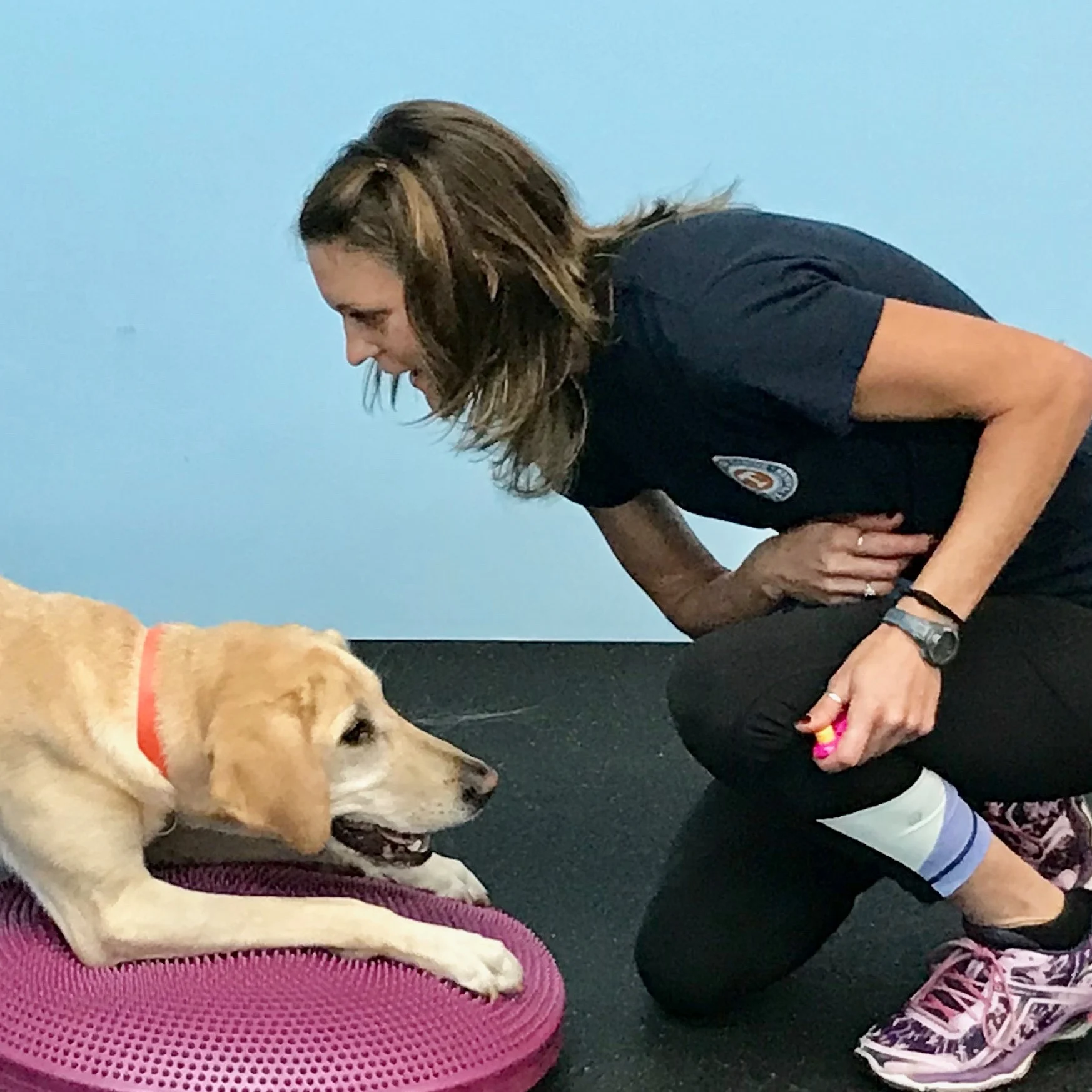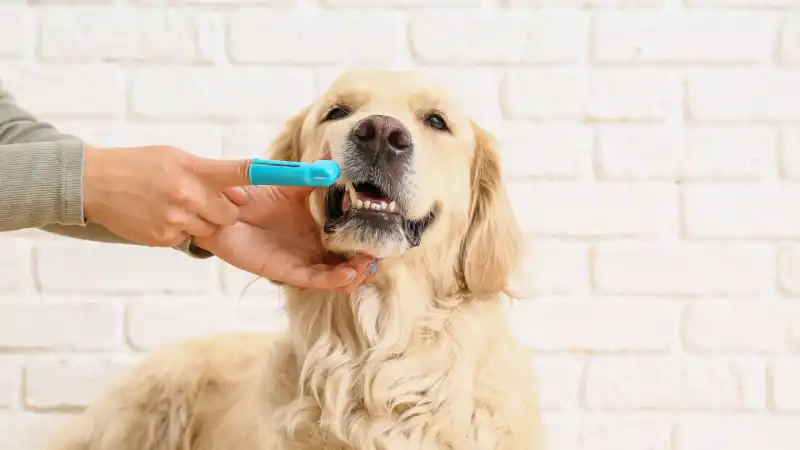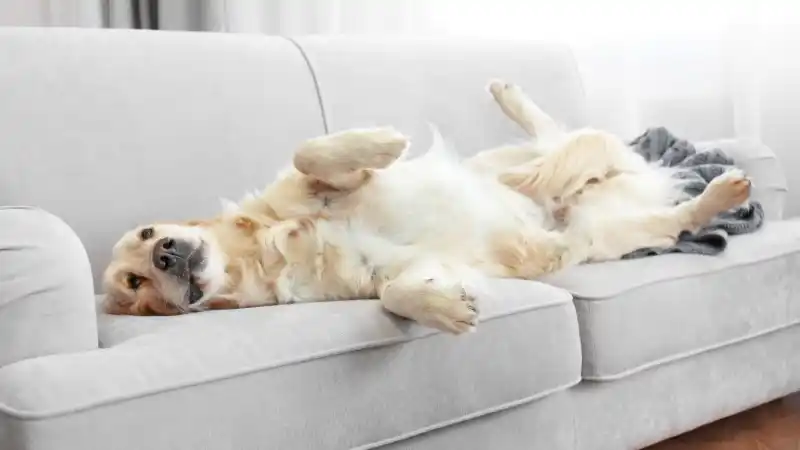How to Clip Dog Nails: A Step-by-Step Guide
Nail trimming should be a regular part of dog grooming. Learn the first steps in clipping canine nails in part one of our two-part guide on how to clip dog nails.

One of the most important dog grooming chores you'll handle as an owner of a new pup or older dog is maintaining proper nail length. By regularly clipping your dog's nails, you'll reduce incidents of scratches on humans, furniture, floors, and more.
In addition to being better for your home and family, cutting your dog's nails as part of their routine care will help your dog maintain proper posture and gait when walking or running. As a matter of fact, dogs can’t walk properly when their nails are too long, because the excessive length of the nails strains leg muscles and torques the spine. What's more, dogs with excessively long nails may be more susceptible to nail tearing, which could lead to infection, discomfort, and more veterinary bills for you.
Many pet owners are hesitant to trim their dog's nails, either because the dog resists the nail-cutting process or out of fear of cutting the “quick,” which is the blood supply and nerve embedded in the center of the nail. Learning more about dog nail anatomy can help avoid any missteps with the clippers, which will provide you with confidence and create a calmer environment for your pup. Additionally, you can train your dog to grow accustomed to nail trimming (learn about training in my next blog, “Master Nail Trimming: Part 2 of 2”).
Learn to Clip Dog Nails Using the Proper Tools
Before you even set out to clip your dog's nails, you’ll want to first shop for the right tools for trimming based on your dog's size and other factors like their level of comfort (a Dremel nail grinder may be a bit too loud for some dogs).
To correctly and painlessly clip puppy nails for the first time, opt for either a scissors-style or guillotine-style trimmer, or even a rotary tool like a Dremel. For a rotary tool, you could use the one already in your toolbox and simply apply the correct sandpaper attachment, which for nail grinding is a fine grade of 120-grit paper. Likewise, you could purchase a rotary tool that is made for pet trimming. I personally use a Dremel-brand rotary tool.
The Dremel is a preferred method for nail trimming for many pet owners because it is fast and easy, and it also poses less of a risk of cutting the quick. However, some dogs absolutely detest the sound of rotary tools and are simply unable to relax enough to engage in nail clipping. If you have a high-stress dog or one experiencing high anxiety during grooming, you may want to stick with manual tools, as they make little to no noise at all.
Which tool is right for you? I like the rotary tool because it shaves off just a little bit at a time, and because it doesn’t leave any jagged nail edges that can snag on carpets and wood flooring. Some dog owners prefer to use a nail trimmer because it is quiet and there is no risk of getting any foot fur caught in the rotary part of the tool. And again, we cannot stress this enough: Noise-sensitive dogs will likely do better with a manual nail trimmer than a humming rotary tool.
Understanding Your Dog's Nails
Before you begin cutting or sanding anything on your dog, get familiar with the anatomy of their nails. Caring Hands Vet offers a great picture of the “cutting line” for a dog’s nail – especially if the nails are naturally hooked – as well as the location of the quick.
Again, hitting the quick may cause bleeding and pain, therefore, it’s important to know as best you can where the “cutting line” is located on your dog's unique anatomy. If you do cut the quick, apply styptic powder, cornstarch, or flour to the cut to clot the bleeding.
If your dog has white nails, the cut surface will turn pink just before reaching the quick (so always stop there) and you may even be able to see the quick from the side of the nail. For black nails, trim off the “hook” and pay attention to the color of the middle of the nail; the cut surface will show a grey or white center at first, then black, and eventually pink right before you reach the quick – always stop there!
Stay Tuned for More About How to Clip Dog Nails
In my next blog post dedicated to tips and tricks for cutting dog nails (“Master Nail Trimming: Part 2 of 2”), I go into detail on how to train your dog to accept handling of and trimming of their nails, as well as how to make it a regular part of puppy grooming.
Wondering what to do about infected dog nails or paws due to irregular trimming or grooming? Check with a licensed veterinarian, and consider getting your pup coverage from the only dog insurance brand that covers pre-existing conditions*: AKC Pet Insurance (underwritten by Independence American Insurance Company). Click here for a quote from the pet insurance of champions.
*Not available in all states. Pre-existing condition coverage requires a 12-month waiting period.

Every Dog and Cat Deserves the Pet Insurance of Champions
Get prize-winning care for your pets.

Jasey Day holds the Certified Canine Fitness Trainer (CCFT) credential through the University of Tennessee. She is a member of the Bobbie Lyons K9FITteam - a team of compassionate canine fitness instructors who actively teach others and continually expand their own knowledge. Since 2004, Jasey has taught a variety of workshops and classes on the following: Puppy, Canine Good Citizen/Family Pet, Advanced Family Pet, Canine Fitness, Canine Swimming, Rally, and Agility. In addition, Jasey has earned over 60 titles in Dock Diving, Agility, Rally, CGC and Trick Dog. Jasey has worked full time for the American Kennel Club since 2007 and teaches at Care First Animal Hospital in Raleigh, NC. Jasey’s Labrador Retrievers spend their free time hiking, training, and snuggling with Jasey.
READ MORE ARTICLES

